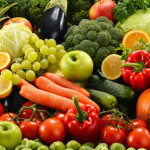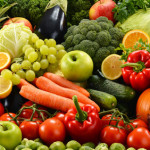
The five top agricultural exports from Kenya could gain more than 20 percent value addition if the government carries out a new export-boosting plan.
The agricultural principal secretary, Chris Kiptoo, highlighted tea, alongside coffee, flowers, pyrethrum and horticultural produce, as the key to generating more income. He was speaking during the launching of the National Export Development & Promotion Strategy, November 20.
The scheme aims to boost the total revenue that the local exports currently bring, by a margin of 20%, in five years’ time. One of the underlying tenets is to increase value addition momentum, as currently the country exports 90 percent of its tea and horticulture, raw.
Value addition, in major exports, like tea, only accounts for a meagre 6% of the total bulk export of the raw produce.
This news comes at a time when the country is boosting its horticultural image at the international scene. With the implementation of KS1758 Second Part, a standard that seeks to valuate every part of the journey that herbs, traditional vegetables and fruits make from the harvest stage to the final destination, the country may attract more importers.
Via the National Horticulture Traceability System (NTS), the agricultural officials aim to reverse the denial of entry into global markets such as the European market, for local produce. Pesticide residue, for instance, had plagued especially mange-tout exports, in recent years. The digital system will measure the produce before exporting it, to ensure that it does not surpass the lowest chemical residual levels by the minimum 0.01 percent.
Some of the economic factors that will buoy the multiple schemes by the agricultural bodies in Kenya, to multiply fresh produce acceptability abroad, are new trade pacts. For instance, the United States has improved its relations with Kenya, opening a leeway for the export of flowers and tropical fruits, which increased by 14 percent, in 2013.
This was at a time when the local currency was at a stable margin of 82, per dollar. Currently, the US market offers a plenty of opportunities, including an advantageous mango season in Kenya: it is unique in terms of being seasonal when other exporters to the US have depreciated their supplies. Additionally, the national carrier, Kenya Airways, mid this year, got a nod to fly directly to the East Coast, which makes for easy fresh produce shipments.
With the horticultural sector providing a total of $991.7 million, worth of revenue to the country, it was time the government implemented the aforementioned plans. A 20% increase would bring foreign exchange to $1.189 million or above.
It is processed products, however, which the National Export Development and Promotion Strategy, aims to boost that can sway exports, in Kenya’s favor. This includes livestock products, fisheries and green fruits.
Processing is currently in the hands of a few private investors, but, according to the agricultural PS, this could change as the government enjoins the private sector.
The top destinations for fresh produce include the US, the United Kingdom, Holland and Germany. The top recipients of other goods like manufactured products include Uganda, Tanzania, DRC, Pakistan and Rwanda.
